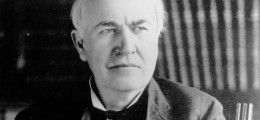In a 2009 TED talk on his theory of singularity, Ray Kurzweil used the example of the Human Genome Project (sequencing DNA) to explain the path and power of exponential growth. Started in 1990, HGP began the process of mapping the sequence of the genome, which proved more difficult and costly than first anticipated. After 1/2 the projected time to complete the project was over (completed in 2003), critics of the project complained that HGP was only 1% complete with the sequencing. However, due to power of exponential growth, HGP was able to finish on time because the remaining work did not take a linear path to completion. Researchers were able to double the 1% seven more times in the remaining 6.5 years and finish on time.
When creating a culture of continuous improvement, the rate of change can often look and feel like the first 1/2 of the genome project. Finding champions for the cause can be difficult and resistance to change can keep you believing you are taking 2 steps back for every 1 step forward. That being said, I think Ray’s example raises a fascinating question for us to consider.
Is it possible to create an exponential growth curve when implementing a culture of continuous improvement? And if so, how do you plan and roll out the change so that you can reach a tipping point and begin to double your “1%” month after month?
Whatever the answer, two things are clear. First, change is not linear. When creating a culture of continuous improvement, it’s impossible to create a cause and effect relationship between the actions you take and the resulting change in culture. Second, if our goal is to create the ideal conditions for exponential growth to occur, we can’t get discouraged at the first sign of failure. If after 6 years, you feel like you have only accomplished 1%, keep going because success may be just around the corner.




Leave a Reply